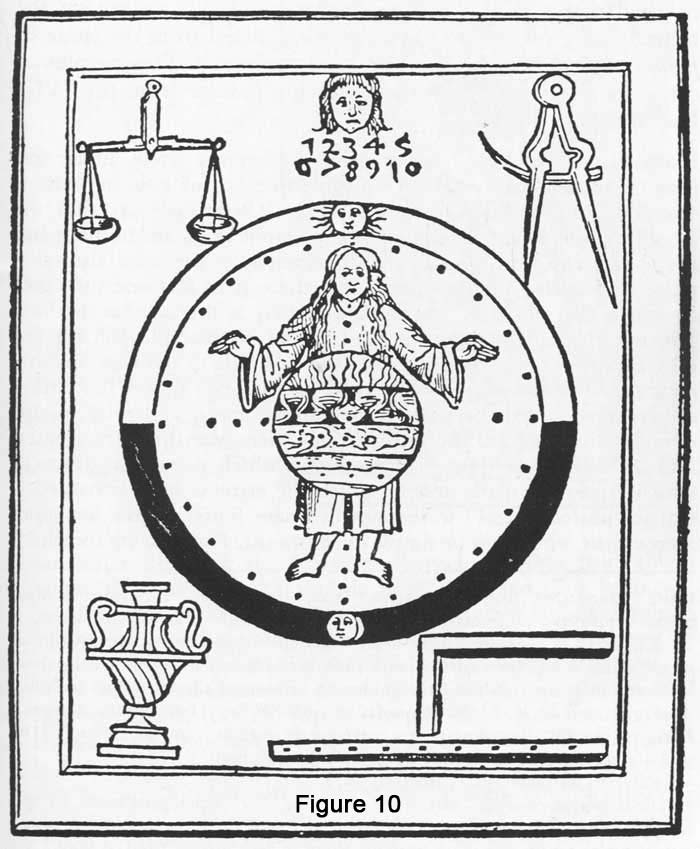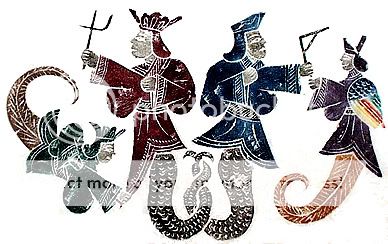Katzpur
Not your average Mormon
Thank you, Mr. Cheese, for proving my point. You do an excellent job of cutting and pasting. You clearly know nothing of either Mormonism or Freemasonry aside from what you can find on the web. That doesn't seem to be much of a concern to you, though, so carry on...well you both wear aprons
mormons have masonic symbols
you both have a temple
you both learn more about the "religion" as you go on....
Joseph Smith: America's Hermetic Prophet compares Joseph Smith to Hermetcism (which is masonary for some)
further:
Joseph Smith and Kabbalah: The Occult Connection
Figure 10. The 1650 edition of a thirteenth century alchemical work by Albertus Magnus contains one of the earliest allegorical representations of the key symbols later subsumed by both Masonry and Mormonism: the compass and square. Christ as Adam Kadmon appears within a sphere of light and dark, marked with the ubiquitous sun and moon, suggesting the complexio oppositorum manifest in creation. Within his body are encircled the four primal elements: fire, air, water, and earth. In the four corners of the madala are placed symbols of the divine work: the compass, the square and ruler, the scale of justice, and (perhaps) the vessel of chrism--an anointing oil of mercy balanced against the scale of justice. At the top appear the ten sacred numbers (represented also by the ten Sefiroth of Kabbalah) by which creation was mediated. Albertus Magnus, Philosophia naturalis (Basel, 1650).

"While I would not diminish the inventive genius of Joseph Smith, careful reevaluation of historical data suggests there is both a poetic and an unsuspected factual substance to Bloom's thesis. Though yet little understood, from Joseph's adolescent years forward he had repeated, sometime intimate and arguably influential associations with distant legacies of Gnosticism conveyed by Kabbalah and Hermeticism--traditions intertwined in the Renaissance and nurtured through the reformative religious aspirations of three subsequent centuries. Though any sympathy Joseph held for old heresy was perhaps intrinsic to his nature rather than bred by association, the associations didexist. And they hold a rich context of meanings. Of course, the relative import of these interactions in Joseph Smith's history will remain problematic for historians; efforts to revision the Prophet in their light--or to reevaluate our methodology of understanding his history--may evoke a violently response from traditionalists. Nonetheless, these is substantial documentary evidence, material unexplored by Bloom or Mormon historians generally, supporting a much more direct Kabbalistic and Hermetic influences upon Smith and his doctrine of God than has previously been considered possible.
Through his associations with ceremonial magic as a young treasure seer, Smith contacted symbols and lore taken directly from Kabbalah. In his prophetic translation of sacred writ, his hermeneutic method was in nature Kabbalistic. With his initiation into Masonry, he entered a tradition born of the Hermetic-Kabbalistic tradition. These associations culminated in Nauvoo, the period of his most important doctrinal and ritual innovations. During these last years, he enjoyed friendship with a European Jew well-versed in the standard Kabbalistic works and possibly possessing in Nauvoo an extraordinary collection of Kabbalistic books and manuscripts. By 1844 Smith not only was cognizant of Kabbalah, but enlisted theosophic concepts taken directly from its principal text in his most important doctrinal sermon, the "King Follett Discourse."
Smith's concepts of God's plurality, his vision of God as anthropos, and his possession by the issue of sacred marriage, all might have been cross-fertilized by this intercourse with Kabbalistic theosophy--an occult relationship climaxing in Nauvoo. This is a complex thesis; its understanding requires exploration of an occult religious tradition spanning more that a millennium of Western history, an investigation that begins naturally with Kabbalah. "
By the late seventeenth century, several occult Hermetic brotherhoods, including Masonic and Rosicrucian societies, existed in England. The relationship these fraternities had to the first Grand Masonic Lodge organized at London in 1717 remains unclear. Although noting that "Masonry underwent gradual changes throughout a period of years stretching from well before 1717 to well after that date," modern authorities on Masonic history usually mark the beginnings of "speculative Masonry" to the decade following organization of this first Grand Lodge.66 Not long after this, around 1750, a specifically Rosicrucian order had been incorporated into French Masonry. Within the initiatory structure of the occult lodges, allegorical "mystery plays" were used to convey, through symbolic ritual, the grounding mythos of Masonry--a mythos which appears to have been fundamentally Hermetic-Kabbalistic.67 Though several renditions of Masonic history still emphasize the role of earlier "craft guilds" as a source of Freemasonry, relatively little evidence supports this claim. Even if one grants the existence of some linkage of eighteenth-century Masonry with earlier craft guilds, this does not diminish the molding force Hermeticism, alchemy and Rosicrucianism had on the fraternity's symbolic and philosophic development. (See Figure 10.) Simply put: Eighteenth-century Masonry was forcefully shaped by esoteric Hermetic-Kabbalistic traditions. While emphasizing this, I allow that several Masonic Lodges eventually evolved with less esoteric underpinnings and much simple fraternal intentions.
.....
Whatever one concludes about the varied hints of scattered early associations with Hermeticism, Joseph Smith had well-documented connections with one of the tradition's major legacies, Masonry. The prophet's associations with the Masonic tradition are thoroughly documented and discussed by Michael W. Homer in this issue of Dialogue. It is unlikely that Smith would have so fully involved himself and his church with the Masonic tradition if he had not sensed therein some intrinsic compatibility with his own religion-making vision. As Homer demonstrates, the prophet said that Masonry was "taken from priesthood," and his followers continued quoting that observation for fifty years after.104 It is possible that Joseph's interpretation of Masonry as a legacy of ancient priesthood was based in his own understanding of a history extending back hundreds of years, a history entwined with the Hermetic mythos and with Kabbalah, alchemy, and Rosicrucianism. The alliance of this occult legacy with Masonry was well understood by esoterically-inclined Masons; assertions of such links were bandied about by American anti-Masonic publications in the late 1820s.105 As noted, Joseph's own history several times touched Hermetic-Kabbalistic traditions. One could argue that he even interacted with them in a creative, visionary sense.
............
Last edited:


